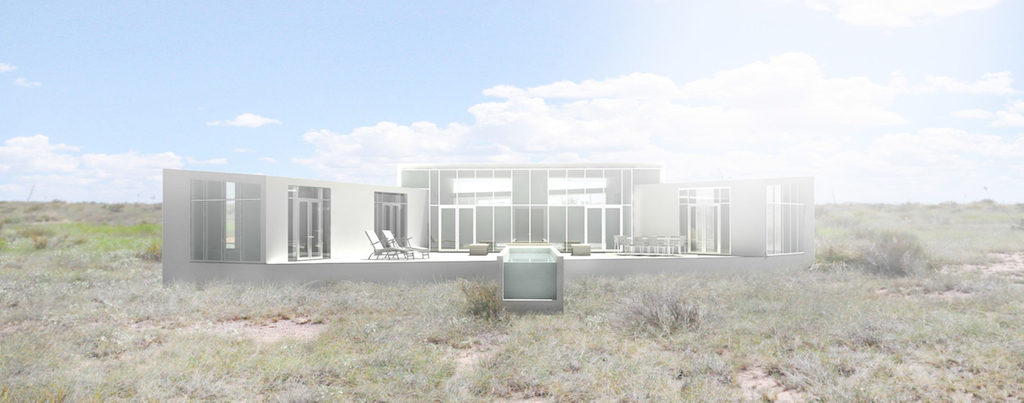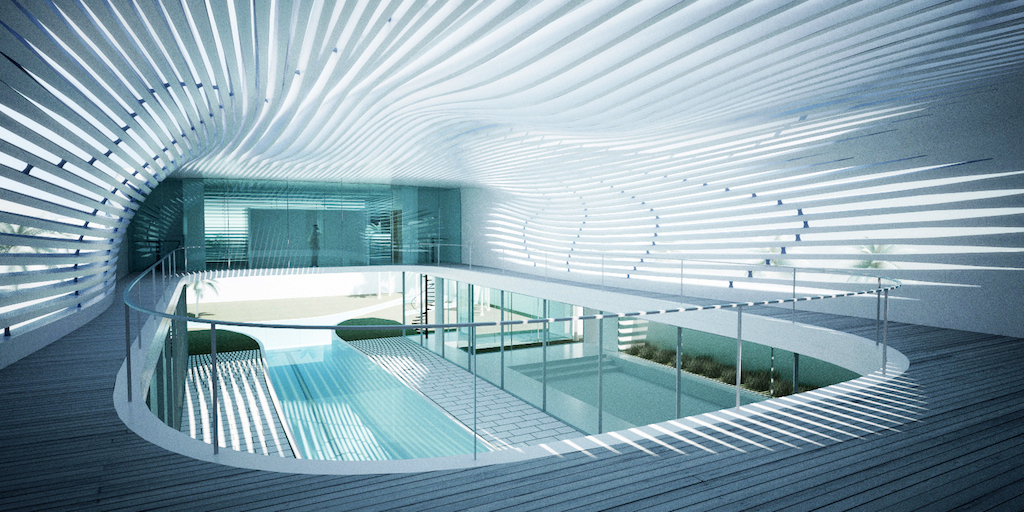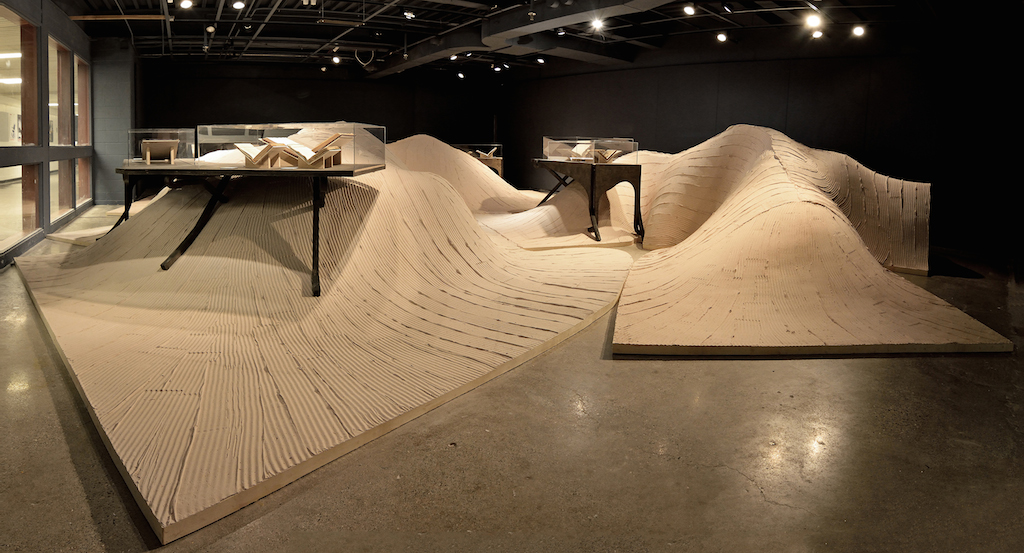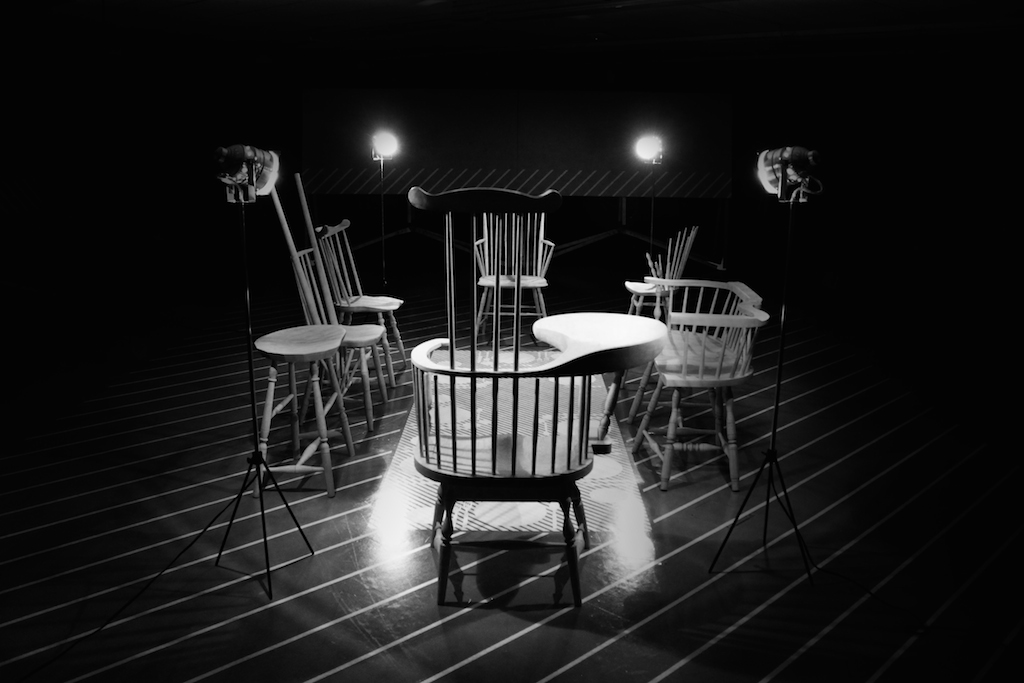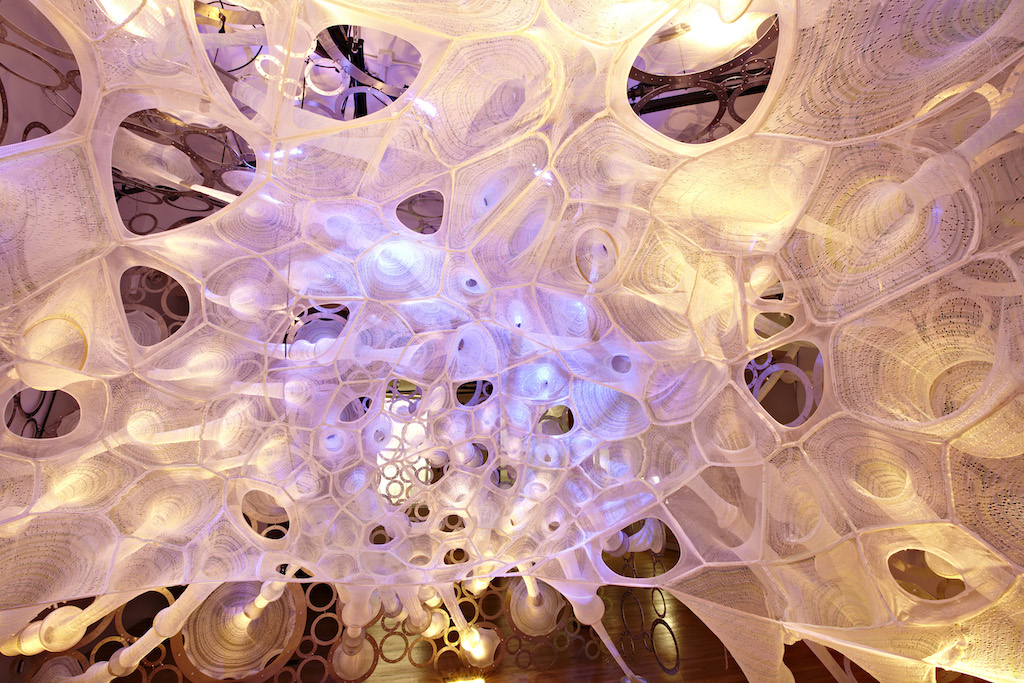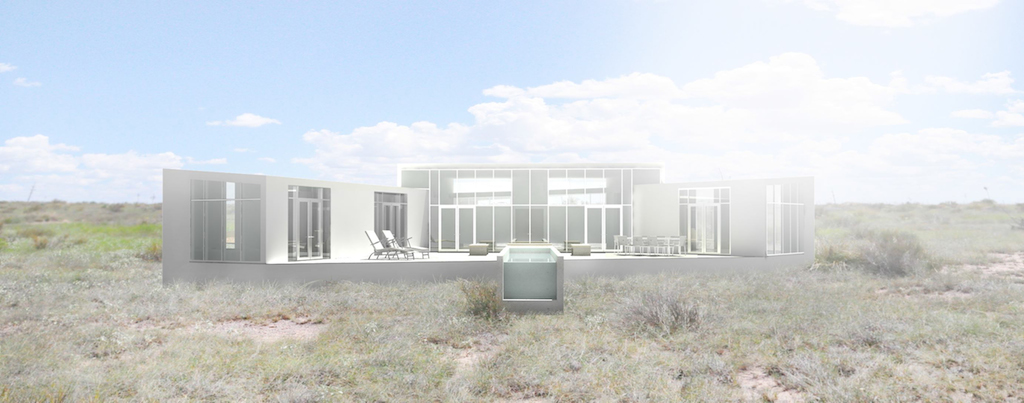The Architectural League Prize, created in 1981, "recognizes exemplary and provocative work by young practitioners and provides a public forum for the exchange of their ideas."
This year, six winners were selected, from firms East Coast to West. Each will present their work in lectures, at an exhibition, and in a catalogue published by Princeton Architectural Press.
Each year, the competition has a unique theme chosen by the League's Young Architects + Designers Committee. This year, the theme was "Overlay," defined as “directs—rather than merely reconstructs—process.”
As explained in the call for entries: “We are interested in how overlay (iterative, conceptual, and notational) drives discourse, tension between iterations, design solutions, and the parameters by which work is reviewed. Overlay is unique to the designer; the techniques developed are activated overtime with layered meanings to push architectural concepts. Thus submissions might include interpretations of overlay that vary from process to presentation to product to shape and establish your identity as a young practice.”
In addition to the committee members, the 2014 Architectural League Prize jury consisted of Preston Scott Cohen, Evan Douglis, Florian Idenburg, Jennifer Lee, Charles Renfro, and Annabelle Selldorf.
Check out the winners below, with firm descriptions from the Architectural League:
Young & Ayata
Kutan Ayata and Michael Young
Brooklyn, N.Y.
In 2008, Kutan Ayata and Michael Young co-founded Young & Ayata in order to “explore novel formal and organizational possibilities in architecture and urbanism.” The Brooklyn-based partnership is committed to experimentation, and views “the reality of contemporary building as a provocation to the progression of experiments in form, material, and technology.”
The firm’s work consists of both commissions and experimental research, as they seek to engage “with contemporary cultural issues that influence and are influenced by our environment.” Recent projects include the competition scheme of an opera house in Busan, South Korea, and a conceptual master plan for the Aalto University Campus Center in Helsinki, Finland.
Kutan Ayata received a Bachelor of Fine Arts in Architecture from the Massachusetts College of Art in Boston and a Masters in Architecture from Princeton University, where he was a recipient of the Suzanne Kolarik Underwood Thesis Prize. He is an Adjunct Assistant Professor at Pratt Institute’s GAUD and a Lecturer at University of Pennsylvania.
Michael Young received a Bachelor of Architecture from Cal Poly San Luis Obispo and a Masters of Architecture from Princeton University, where he was also the recipient of the Suzanne Kolarik Underwood Thesis Prize and the Howard Crosby Butler Traveling Fellowship in Architecture. He is an Assistant Professor at The Irwin S. Chanin School of Architecture at The Cooper Union and teaches in the core graduate design studio at the Yale University School of Architecture.
Kutan Ayata and Michael Young will discuss their work on June 26, 2014, in a public lecture.
The LADG
Claus Benjamin Freyinger and Andrew Holder
Los Angeles
Established in 2004, The Los Angeles Design Group (The LADG), is led by principals Claus Benjamin Freyinger and Andrew Holder. The firm works at all scales, and has completed projects in California, Colorado, Hawaii, Minnesota, New York, Oregon, and the United Kingdom.
The founders see their work as contributing to a “longer history of ideas,” and draw on this history to craft unexpected solutions to conventional problems. Recent projects include installations at the Taubman College Gallery at the University of Michigan, and several commercial interior renovations in New York and Santa Monica.
Claus Benjamin Freyinger received a Bachelor of Arts in Art History from Boston College and his Master of Architecture from the University of California Los Angeles in 2005. Andrew Holder received a Bachelor of Arts in Political Science from Lewis and Clark College and his Master of Architecture from the University of California Los Angeles in 2005. He is an Assistant Professor at the University of Michigan, where he was the 2012-2013 Oberdick Fellow.
Claus Benjamin Freyinger and Andrew Holder will discuss their work on June 24, 2014 in a public lecture.
SIFT Studio
Adam Fure
Ann Arbor, Mich.
Adam Fure and his Ann Arbor design practice, SIFT Studio, enliven, in his words, “old substances through new treatments; composing new aesthetic mixtures from the matter at [one’s] fingertips.” Through these experiments, SIFT Studio “promotes architecture’s unique capacity to shape experience, which is neither essentialized nor thought to be static and singular.”
Recent work includes a multimedia installation in Stuttgart, Germany, that transforms space, sound, and light into variable dimensions, and a conceptual mirror house that was a finalist for BOFFO Building Fashion’s Linda Farrow competition in 2013.
Adam Fure received a Bachelor of Science in Architecture from Taubman College of Architecture and Urban Planning at the University of Michigan and a Masters of Architecture with Distinction from the Department of Architecture and Urban Design at the University of California Los Angeles in 2006. He is an Assistant Professor at the Taubman College of Architecture and Urban Planning at the University of Michigan.
Adam Fure will discuss his work on June 24, 2014 in a public lecture.
Norman Kelley
Thomas Kelley and Carrie Norman
Brooklyn, N.Y. and Chicago
Thomas Kelley and Carrie Norman founded the Brooklyn- and Chicago-based design collaborative Norman Kelley in 2012. Through their work Kelley and Norman seek to “vulgarize, satirize, and reposition (lofty) material to elevate the ordinary.”
Recent projects include Wrong Chairs, in which they “purposefully disrupt the notion of ‘correctness’” with stylized abstractions of the iconic Windsor Chair, and Shape Shape Evolution, an interior playhouse for the Early Learning Play Foundation in Chicago. Norman Kelley’s drawings for Ignacio Gonzalez will be exhibited at the 2014 Venice Architecture Biennale.
Kelley received a Bachelor of Science in Architecture with Honors from the University of Virginia and a Master in Architecture from Princeton University. He is currently a Visiting Assistant Professor at the University of Illinois at Chicago and the James R. Lamantia, Jr. Rome Prize Fellow at the American Academy in Rome. Norman also received a Bachelor of Science in Architecture with Honors from the University of Virginia and a Master in Architecture from Princeton University. She is presently a design associate with SHoP Architects.
Thomas Kelley and Carrie Norman will discuss their work on June 26, 2014 in a public lecture.
Jenny Sabin Studio
Jenny E. Sabin, Principal and Founder of Philadelphia-based Jenny Sabin Studio, is an architectural designer, artist, and educator. Her work, in her own words, “investigates the intersection of architecture and science, and applies insights and theories from biology and mathematics to the design of material structures.”
Past projects include Branching Morphogenesis, a three-dimensional “datascape” made up of 75,000 zip ties; Polymorph, a project exploring digital fabrication of ceramic form; and myThread Pavilion, a work commissioned by Nike Flyknit Collective. Last year Jenny Sabin Studio, in collaboration with ISA Architects, worked on a new 31-unit housing development in Francisville, Philadelphia.
Sabin is currently an Assistant Professor at Cornell University. She is also the founder and director of Sabin Design Lab at Cornell and the co-founder of the research and design network LabStudio. Sabin holds an undergraduate degree with Honors in Ceramics and Interdisciplinary Visual Art from the University of Washington and a Master of Architecture from the University of Pennsylvania.
Jenny Sabin will discuss her work on June 26, 2014 in a public lecture.
Geoffrey von Oeyen Design
Geoffrey von Oeyen
Los Angeles
Geoffrey von Oeyen is Founder and Principal of Los Angeles-based Geoffrey von Oeyen Design. His work, as he describes it, “mediate[s] between the existing and the new with the aim of reframing and redirecting existing views, patterns, and orientations.” Von Oeyen characterizes the relationship within each project as: “a dialogue that seeks to reveal essential geometric paradigms.”
The practice has several projects in development across California, Texas, Georgia, and Puerto Rico. Two located in Malibu, California, the Horizon House and the Case Room, a private study for two attorneys, are due to begin construction this summer.
Von Oeyen received a Bachelor of Arts with Honors in Urban Studies and minors in Art History and History from Stanford University. He was a US/UK Fulbright Scholar at the University of Cambridge, where he obtained a Master of Philosophy in History and Philosophy of Architecture. Von Oeyen received a Master of Architecture from the Harvard Graduate School of Design, where he was awarded the Faculty Design Award. He is currently a faculty member at the USC School of Architecture.
Geoffrey von Oeyen will discuss his work on June 24, 2014 in a public lecture.
Related Stories
MFPRO+ New Projects | Oct 30, 2024
BIG’s One High Line finally reaches completion in New York City’s West Chelsea neighborhood
One High Line, a luxury residential project spanning a full city block in New York’s West Chelsea neighborhood, reached completion this summer following years of delays related to investor lawsuits.
Urban Planning | Oct 30, 2024
Bridging the gap: How early architect involvement can revolutionize a city’s capital improvement plans
Capital Improvement Plans (CIPs) typically span three to five years and outline future city projects and their costs. While they set the stage, the design and construction of these projects often extend beyond the CIP window, leading to a disconnect between the initial budget and evolving project scope. This can result in financial shortfalls, forcing cities to cut back on critical project features.
MFPRO+ New Projects | Oct 30, 2024
Luxury waterfront tower in Brooklyn features East River and Manhattan skyline views
Leasing recently began for The Dupont, a 41-story luxury rental property along the Brooklyn, N.Y., waterfront. Located within the 22-acre Greenpoint Landing, where it overlooks the newly constructed Newtown Barge Park, the high-rise features East River and Manhattan skyline views along with 20,000 sf of indoor and outdoor communal space.
Libraries | Oct 30, 2024
Reasons to reinvent the Midcentury academic library
DLR Group's Interior Design Leader Gretchen Holy, Assoc. IIDA, shares the idea that a designer's responsibility to embrace a library’s history, respect its past, and create an environment that will serve student populations for the next 100 years.
Resiliency | Oct 29, 2024
Climate change degrades buildings slowly but steadily
While natural disasters such as hurricanes and wildfires can destroy buildings in minutes, other factors exacerbated by climate change degrade buildings more slowly but still cause costly damage.
Office Buildings | Oct 29, 2024
Editorial call for Office Building project case studies
BD+C editors are looking to feature a roundup of office building projects for 2024, including office-to-residential conversions. Deadline for submission: December 6, 2024.
Healthcare Facilities | Oct 28, 2024
New surgical tower is largest addition to UNC Health campus in Chapel Hill
Construction on UNC Health’s North Carolina Surgical Hospital, the largest addition to the Chapel Hill campus since it was built in 1952, was recently completed. The seven-story, 375,000-sf structure houses 26 operating rooms, four of which are hybrid size to accommodate additional equipment and technology for newly developed procedures.
Multifamily Housing | Oct 28, 2024
A case for mid-rise: How multifamily housing can reshape our cities
Often referred to as “five-over-ones,” the mid-rise apartment type is typically comprised of five stories of apartments on top of a concrete “podium” of ground-floor retail. The main criticism of the “five-over-one” is that they are often too predictable.
Sports and Recreational Facilities | Oct 24, 2024
Stadium renovation plans unveiled for Boston’s National Women’s Soccer League
A city-owned 75-year-old stadium in Boston’s historic Franklin Park will be renovated for a new National Women’s Soccer League team. The park, designed by Fredrick Law Olmsted in the 1880s, is the home of White Stadium, which was built in 1949 and has since fallen into disrepair.
Laboratories | Oct 23, 2024
From sterile to stimulating: The rise of community-centric life sciences campuses
To distinguish their life sciences campuses, developers are partnering with architectural and design firms to reimagine life sciences facilities as vibrant, welcoming destinations. By emphasizing four key elements—wellness, collaboration, biophilic design, and community integration—they are setting their properties apart.


